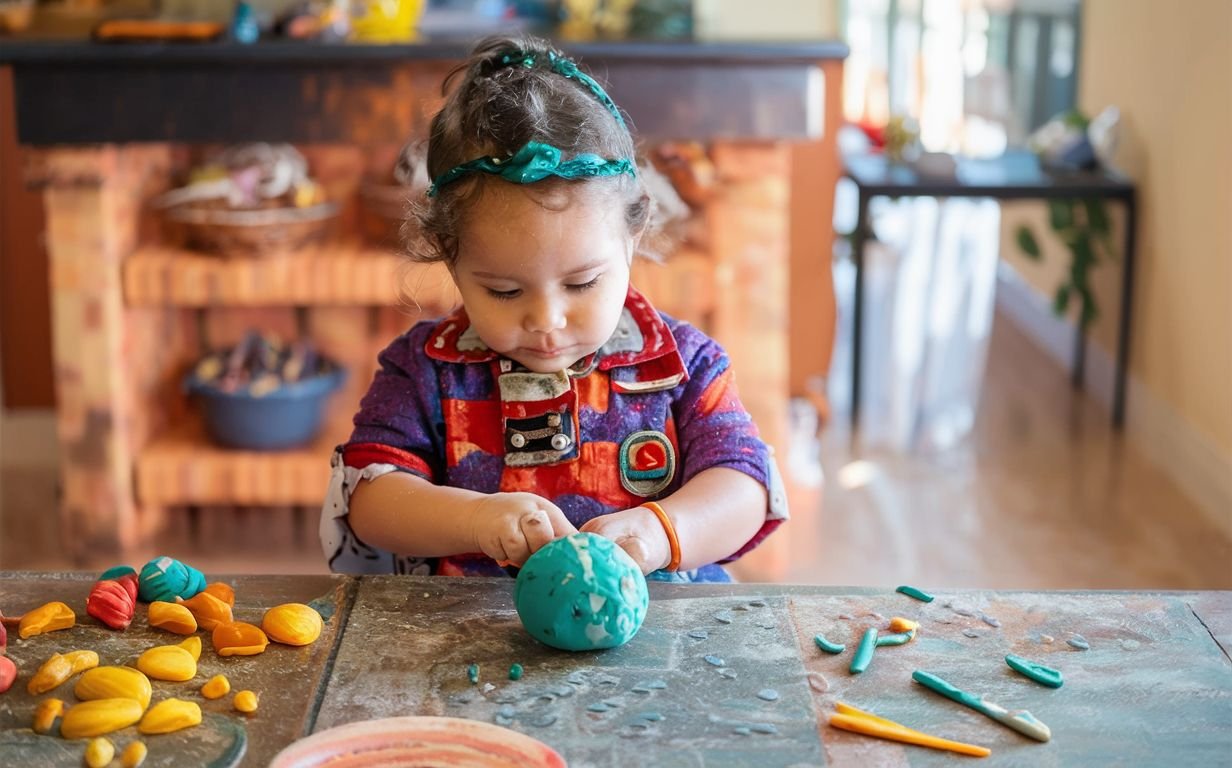
Polymer clay, a versatile material beloved by crafters and artists, has gained popularity for its ease of use and vibrant colors. However, for some individuals, it can lead to an unexpected and uncomfortable reaction: polymer clay allergy. In this article, we delve into everything about polymer clay, explore the reasons behind these allergic responses, and discuss ways to manage and prevent them.
What Is Polymer Clay?
Polymer clay is a type of modeling (or crafting) clay (different from clay dust)composed of tiny particles of polyvinyl chloride (PVC) suspended in a plasticizer. It is widely used for sculpting, jewelry making, and other creative projects. When baked at low temperatures, polymer clay hardens into a durable and colorful material that retains its shape.
The Culprits: Acrylates
The key player in polymer clay allergy is acrylates. These chemical compounds are essential for the polymerization process that transforms the clay from a pliable mixture into a solid form. Acrylates exist in two states:
- Monomers are the individual building blocks of polymer clay. They are also potent irritants and allergens. Monomers typically come in liquid or powder form.
- Polymerized States: Once polymerized, acrylates become relatively inert and non-reactive. The hardened clay is usually safe for most people.
Where Are Acrylates Found?
Acrylates are ubiquitous in our environment. Let’s explore some common types and their applications:
- Methyl Methacrylate (MMA):
- They are used in orthopedic surgery (acrylic bone cement).
- Found in acrylic fibers, films, inks, and solvent-based adhesives.
- It is also present in dental materials and artificial nails.
- They are used in UV inks, adhesives, lacquers, and dental materials.
- It is commonly found in artificial nails and eyelash adhesives.
- Ethyl Acrylate:
- They are used in paint formulations, industrial coatings, and latexes.
- Present in denture materials, floor polishes, and shoe polishes.
- Ethylene glycol dimethacrylate:
- They are used for plastic bottles, dental materials, and artificial nails.
- It is also found in printing inks and automobile antifreeze.
How Does Polymer Clay Allergy Present?
Direct contact with monomers can trigger allergic contact dermatitis for those allergic to specific acrylates. Symptoms include:
- Itching
- Burning
- Scaling
- Hives
- Blistering
The fingers and hands are commonly affected areas, especially when handling the liquid or powdered forms. Interestingly, eczema may occur away from the contact site due to the transfer of monomer residues (e.g., acrylic nails causing eyelid dermatitis).
Polymer Clay Allergy – Who Is at Risk?

Anyone can develop an acrylate allergy, but certain groups are more susceptible:
Crafters and Artists:
- Risk Factor: Frequent exposure to polymer clay increases the likelihood of developing an allergy.
- Reason: Crafters and artists often handle polymer clay extensively during sculpting, molding, and shaping. Repeated contact with the material can sensitize the skin over time.
Dental Professionals:
- Risk Factor: Dental practitioners, including dentists and dental hygienists, are at risk of developing a polymer clay allergy due to their exposure during dental procedures.
- Reason: Dental materials, such as acrylic bone cements and artificial teeth, contain acrylates. Handling these materials can lead to sensitization and allergic reactions.
Nail Technicians:
- Risk Factor: Nail technicians frequently work with artificial nails and adhesives containing acrylates.
- Reason: The application and removal of acrylic nails involve direct contact with acrylate-containing products. Prolonged exposure can trigger allergies.
Individuals with Sensitized Skin:
- Risk Factor: People with a history of skin sensitization or existing skin conditions are more susceptible.
- Reason: Allergies can develop over time. If someone has previously encountered acrylates (e.g., through nail treatments or dental work), their immune system may react upon subsequent exposure.
General Population:
- Risk Factor: While anyone can develop an acrylate allergy, some individuals may be genetically predisposed.
- Reason: Genetic factors play a role in determining an individual’s susceptibility to allergies. Some people may have a heightened immune response to acrylates.
- Remember that awareness and precaution are essential. If you fall into these risk categories or suspect an allergy, take the necessary steps to minimize exposure, consult a dermatologist if symptoms arise, and explore alternative materials for your creative endeavors.
Managing Polymer Clay Allergy:
Avoidance:
- Limit Exposure: If you suspect an allergy, minimize contact with liquid, powder, or paste polymer clay forms. Consider using gloves when handling it.
- Choose Alternatives: Explore other creative materials that don’t contain acrylates. There are non-acrylate-based clays available on the market.
Protective Measures:
- Wear Gloves: When working with polymer clay, especially during sculpting or mixing, wear protective gloves. This prevents direct skin contact with the clay and reduces the risk of allergic reactions.
- Eye Protection: When sanding or cutting cured polymer clay, wear safety goggles to prevent particles from entering your eyes.
Ventilation:
- Work in a Well-Ventilated Area: Working in a Properly ventilated space helps disperse airborne particles. Set up your crafting space near an open window or use a fan to circulate air.
Patch Testing:
- Test on a Small Area: Before extensive use, perform a patch test, usually on a small, inconspicuous area of your skin. Apply a tiny amount of polymer clay and observe any reactions over 24 to 48 hours. This is one of the best methods to make sure about the presence of polymer clay allergy.
- Choose a Safe Spot: The inside of your forearm or behind your ear are good spots for patch testing.
Consult a Dermatologist:
- Seek Professional Advice: If you experience symptoms like itching, redness, or blistering after handling polymer clay, consult a dermatologist.
- Allergy Testing: A dermatologist can perform allergy tests to identify specific acrylates you might be allergic to.
Hygiene Practices:
- Wash Hands Thoroughly: It’s crucial to wash your hands thoroughly, including finger tips, with soap and clean water after working with polymer clay,
- . This removes any residual clay and minimizes skin exposure.
- Avoid Touching Face: To prevent the accidental transfer of allergens, avoid touching unwashed hands on the face while handling polymer clay.
Substitute Materials:
- Non-Acrylate Clays: Explore alternative clays that don’t contain acrylates. Some options include air-dry clay, ceramic clay, or natural clay.
- Polymer Clay Alternatives: Look for brands that specifically advertise as acrylate-free or hypoallergenic.
While polymer clay offers endless creative possibilities, understanding its potential allergens is crucial for a safe and enjoyable crafting experience.
Remember, everyone’s sensitivity varies, so it’s essential to listen to your body. If you notice any adverse reactions, discontinue use immediately and seek professional advice. Craft safely and enjoy your creative endeavors!
FAQS
1. Can I be allergic to polymer clay?
Yes, while uncommon, it’s possible to develop an allergy to polymer clay. This typically occurs through prolonged or repeated contact, especially if you have sensitive skin. Common symptoms include itching, redness, and irritation on the hands.
2. Is polymer clay safe for people with “wet clay allergies”?
It depends. Wet clay allergy (actually referred to as clay dust allergy) or possibly clay mold sensitivities as wet clay allergy is a misrepresentation of an allergic reaction.
However, individuals with allergies to certain components found in wet clay, like specific minerals or additives, might also react to similar components present in polymer clay, but most likely would be a safer alternative.



